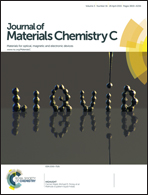Charging behavior of carbon black in a low-permittivity medium based on acid–base charging theory
Abstract
This work presents an investigation of the charging behavior of carbon black (CB) particles dispersed in a low-permittivity medium Isopar L. Highly charged and stably dispersed CB particles in Isopar L were prepared by employing a nonionic surfactant polyisobutylene–mono-succinimide (T151) with basic functionality to treat CB with acidic functionality (oxidized with concentrated nitric acid). As expected, CB particles were successfully negatively charged and presented a remarkably high electrophoretic mobility of −11.56 × 10−10 m2 V−1 s−1 and a zeta potential of −180.3 mV at the T151 concentration of 2.0 wt%, which are the highest values for CB in nonpolar media reported by far. The dispersion stability of CB particles, dominated by the particle charge, was dramatically improved with T151 concentrations increased in the range from 1.0 to 5.0 wt%. Prototype electrophoretic display device based on 2.0 wt% T151 treated CB particles exhibited highly improved performance compared to that of device using pristine CB particles. The high charge density and excellent dispersibility in apolar solvents of CB nanoparticles imply their potential applications in other electronic fields, such as electrically conductive inks for various printed electronics and conductive materials for various sensors.


 Please wait while we load your content...
Please wait while we load your content...